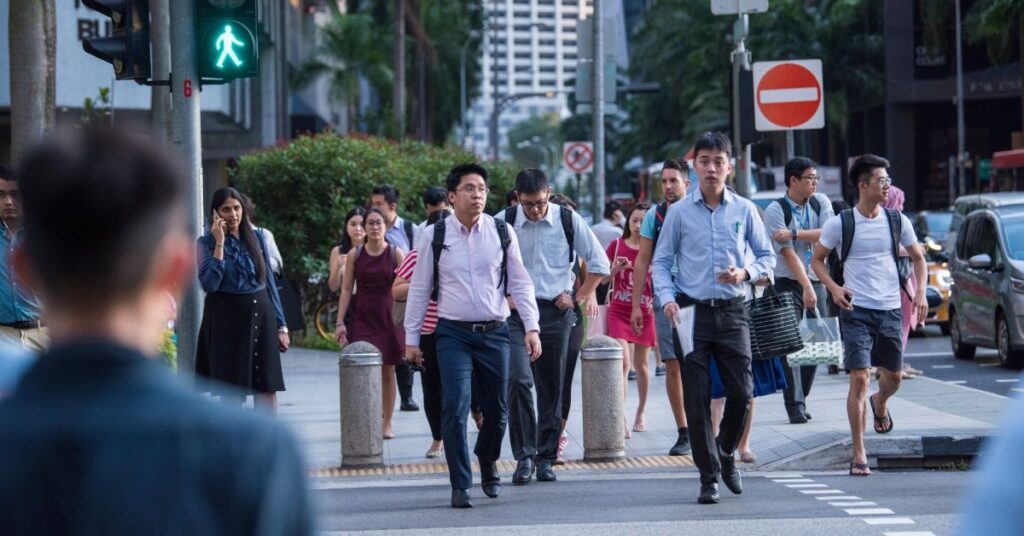Disclaimer: Unless otherwise stated, any opinions expressed below belong solely to the author. All data comes from the Ministry of Manpower.
Every year, the Singapore Ministry of Manpower (MOM) reaches out to thousands of businesses (employing 25 people or more) and public administration bodies, collecting detailed labour market data.
Unlike findings published by private research companies, which collect small statistical samples, it is the largest such survey in the country, covering a total of 15,040 establishments employing 1,857,400 people.
Top PMET vacancies
At 57.7% of all openings, PMET jobs constitute the bulk of the local employment market. And among the statistics provided in MOM’s annual job vacancy report, the ministry has updated its list of the top 10 most in-demand PMET professions, all of which are short of qualified candidates.
It also includes the latest data on expected pay, with reported salary ranges that new hires could expect. Here’s the breakdown:
| Rank | Occupation | Range of wages offered |
| 1 | Teaching & Training Professional | S$2,500 to S$8,250 |
| 2 | Software, Web & Multimedia Developer | S$6,000 to S$12,000 |
| 3 | Commercial & Marketing Sales Executive | S$3,000 to S$4,000 |
| 4 | Civil Engineer | S$3,500 to S$7,000 |
| 5 | Financial & Investment Adviser | S$3,500 to S$4,150 |
| 6 | Industrial & Production Engineer | S$4,300 to S$6,400 |
| 7 | Computer Network, Infrastructure & Platform Professional | S$5,000 to S$9,500 |
| 8 | Registered Nurse & Other Nursing Professional | S$2,500 to S$5,130 |
| 9 | Pre-Primary Education Teacher | S$3,700 |
| 10 | Accountant | S$4,500 to S$8,500 |
Teachers have dethroned software developers this year, with the most senior of them paid up to S$8,500 per month. Pre-primary education teachers have appeared on the list for the first time as well, seeing a surge of demand for their services, although at a considerably lower pay.
IT personnel, despite an overall drop compared to 2023, continue to rank highly on the list for both software and hardware-related professions at no. 2 and 7, respectively.
New entrants include civil engineers, who surged from the 13th spot in the previous report to no. 4, financial & investment advisers (up from no. 31 to no. 5) and accountants (from no. 15 to no. 10).
Jobs that dropped off the ranking this year include management executives, budgeting & financial accounting managers, management & business consultants, systems analysts, and business development managers.
Hardest to fill
Not all vacancies are created equal, of course, and some have been much harder to fill than others. MOM has also provided a list of the top five PMET professions unfilled for at least six months:
- Financial & Investment Adviser
- Commercial & Marketing Sales Executive
- Teaching & Training Professional
- Registered Nurse & Other Nursing Professional
- Software, Web & Multimedia Developer
The reasons why employers are finding it so hard are not new or surprising, and mostly boil down to a lack of necessary skills or experience (although in close to 40% of the cases, the offered pay turned out to be the problem):

How many of them are new jobs, though?
When discussing vacancies, there’s always a possibility that the openings are a result of employee turnover rather than genuinely new opportunities. Or, as mentioned before, the conditions aren’t satisfactory for the candidates.
Fortunately, we have data for that as well:

Close to 46% of the vacancies appearing in the Singapore labour market are newly created openings, a figure that is consistent with past averages and contributes to the positive long-term trend that is observed in the numbers.
In other words, each year, around half of all available jobs are created fresh, whether by companies restructuring themselves or expanding their offerings and, thus, needing to hire qualified new workers.
The bulk of this job creation is still happening in the IT sector, despite its global troubles and retrenchments which have hit it over the past few years, with three-quarters of jobs on offer in Singapore being new.
As it turns out, then, the AI boom hasn’t dented demand for tech professionals (not yet, at least):

With 164 vacancies for every 100 unemployed (including around 95 in PMET jobs), Singapore’s labour market is not short of opportunities. It remains, however, short of qualified candidates.
This mismatch is actually good news for Singaporeans looking for a job, as it is still the employee’s market, likely helping job hunters to negotiate better conditions with a potential new employer before they even decide to leave their current position.
That said, unless you command the skills or experience (as academic qualification continues to decrease in importance), you might not be in a position to make demands. This talent gap incentivises companies to simply seek workers abroad, if not contemplate shifting their operations out entirely. As a result, Singapore is bound to see a gradually growing number of foreign workers in the coming years.
Not as competition to Singaporeans, as I showed in my previous article, but as a necessary supplement, keeping Singapore’s businesses growing.
- Read other articles we’ve written on job trends here.
Featured Image Credit: Namcha ph/ Unsplash










